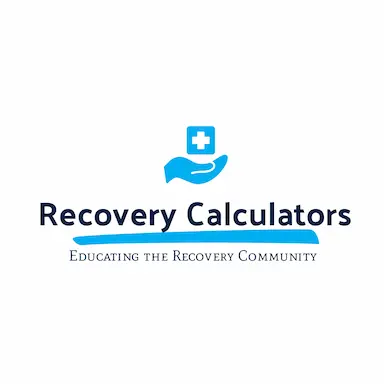Applying SMAST: Screening for Alcoholism in Adults

When it comes to tackling alcohol addiction, accurately assessing the severity and impact of an individual’s drinking behavior is crucial. This is where the Self-Administered Alcohol Screening Test (SMAST) proves to be an invaluable tool. Originally developed to facilitate a deeper understanding of an individual’s alcohol consumption patterns, SMAST provides a quick, reliable method to screen for potential alcohol-related issues that might require further intervention. At our facility, we utilize SMAST not just as a diagnostic tool but as a starting point for crafting personalized treatment programs. Its simplicity and efficiency allow us to engage with clients effectively, ensuring they understand their own behaviors and the potential consequences. By integrating SMAST into our initial assessment process, we pave the way for open discussions about alcohol use, which is often the first step in a successful recovery journey. With this approach, we can identify pertinent issues early and tailor interventions that address each client’s unique needs, enhancing the likelihood of a successful recovery. What Is SMAST and How Does It Work? The Self-Administered Alcohol Screening Test (SMAST) is a scientifically developed questionnaire designed to identify indications of alcohol dependence and misuse. Developed for easy administration, it encourages an honest self-assessment of drinking habits. SMAST consists of simple yet probing questions that clarify patterns connected to problematic alcohol use. Administering the test generally takes place during preliminary evaluations, where we determine the breadth and depth of an individual’s alcohol challenges. Essentially, SMAST works by scoring responses to its questions, each of which delves into different aspects of alcohol use, such as frequency, emotional responses, and social or occupational consequences. Once completed, we analyze these scores to gauge the severity of alcohol use. This score then directs the personalized treatment approach, underscoring the necessity for different levels of care based on individual risk factors and behaviors associated with their drinking patterns. Key Questions Included in the SMAST Questionnaire A closer look at the SMAST questionnaire reveals key questions vital for uncovering problematic drinking behaviors. These include inquiries such as “Do you feel you are a normal drinker?” which probes the individual’s perception of their drinking normalcy compared to others. Another critical question is, “Have you ever awakened the morning after some drinking the night before and found that you could not remember a part of the evening?” This touches on blackouts, a serious implication of high-risk drinking. Other questions examine the impact of alcohol on the individual’s responsibilities, asking if drinking has ever interfered with their ability to care for their family, perform at work, or manage their responsibilities. These inquiries help us and the individual recognize patterns that may suggest deeper issues like emotional or psychological dependence. By addressing these questions, the SMAST helps illuminate the sensory and consequential aspects of alcohol use, paving the way for targeted interventions that resonate with the personal experiences of those we help. Interpreting SMAST Results: An Expert Guide Once we’ve gathered responses from the SMAST, the next crucial step is interpretation. Each answer is scored to reflect the severity of dependency or misuse, with a higher total score indicating a more urgent need for intervention. A score is typically divided into categories that suggest different treatment approaches. For example, a lower score might indicate minimal treatment with supportive counseling, while a higher score would necessitate a more intensive treatment strategy, possibly including medical detox and residential care. Understanding the implications of each score helps us tailor our discussions with clients. We review the results with them, ensuring they understand their own behaviors and the potential health impacts. This process not only informs our treatment approach but also helps build a foundation of trust and understanding between us and our clients. By taking the time to discuss these results, we validate their experiences and reinforce their commitment to the recovery process. Integrating SMAST into Rehab and Recovery Plans Integrating SMAST results into personalized rehabilitation and recovery plans is where our expertise truly benefits our clients. Based on the outcomes, we design a recovery roadmap that includes suitable therapies, support groups, and possibly medication-assisted treatment. This personalized plan not only addresses the physical aspects of alcohol dependency but also the psychological triggers identified through the SMAST. For clients who need intensive care, we may combine insights from SMAST with other assessments like CIWA for alcohol withdrawal or COWS for opioid withdrawal conditions. This multi-faceted approach ensures comprehensive care that addresses all aspects of addiction. Continual re-evaluation using SMAST throughout the rehabilitation process also allows us to adjust treatment plans as needed, ensuring that recovery is not just achievable but sustainable. Conclusion At Recovery Calculators, we believe in empowering our clients through integrated, scientifically backed methods like SMAST. Understanding and addressing individual needs through precise screening and personalized recovery planning is our commitment. If you or someone you care about is struggling with alcohol-related challenges, reach out to us. Take the first step towards a healthier, fulfilling life with a team that cares deeply about your recovery journey. Try our sobriety calculator and join us today in transforming lives with compassion and leading-edge solutions. Your journey to recovery is just a call away.
SMAST: Unpacking Its Role in Detecting Substance Abuse

In our continuous effort to support individuals on their journey to recovery, we spotlight essential tools that play significant roles in the process of addiction assessment and management. The Short Michigan Alcoholism Screening Test (SMAST) is one such pivotal resource. Developed to provide a straightforward yet comprehensive means to identify potential substance misuse, SMAST has become a cornerstone in the landscape of addiction recovery services. At its core, SMAST is designed to be accessible and easy to apply, making it a preferred choice among professionals in various rehab settings. The tool consists of a series of questions that efficiently gauge the severity and presence of alcohol and drug-related issues. Its reliability and simplicity ensure that even those new to recovery can understand their own situations better and engage more fully in their treatment plans. Why stress the importance of this particular tool? It’s all about effectiveness and empowerment in detection. Early diagnosis through methods like SMAST can significantly alter the course of treatment, potentially steering users away from the pitfalls of long-term dependency. In the following sections, we’ll dive into how SMAST operates, compare it with other tools, and discuss how to implement it effectively in different therapeutic environments, ensuring all stakeholders can leverage its benefits fully. What Is SMAST and How Does It Serve the Recovery Community? The Short Michigan Alcoholism Screening Test (SMAST) is a diagnostic tool specifically tailored to identify symptoms of substance abuse disorders. Developed with precision, its main goal is to facilitate early detection and intervention within the recovery community. As we support individuals navigating the complexities of addiction, SMAST presents an invaluable asset for both practitioners and those seeking recovery. By offering clear, actionable insights, SMAST enables a more tailored approach to treatment planning. Our adoption of SMAST emphasizes its effectiveness in identifying not only alcoholism but also patterns relevant to a broader spectrum of substance abuse. This versatility augments its utility across various settings, ensuring comprehensive support is provided. The benefits it serves include streamlining the initial assessment process, enhancing the accuracy of diagnoses, and fostering an environment where individuals feel understood and well-supported right from the start. Breaking Down the SMAST Questionnaire: Key Questions and Their Impact Delving into the SMAST questionnaire, each question is crafted to reveal critical aspects of an individual’s relationship with substances. For example, questions might probe the frequency of substance use or the emotional and behavioral repercussions of consumption. This methodical inquiry helps to piece together a detailed picture of the person’s habits, highlighting areas of concern that may require attention. Let’s explore some key questions from the SMAST: 1. Have you ever felt you ought to cut down on your drinking or drug use? 2. Have people annoyed you by criticizing your drinking or drug use? 3. Have you ever felt bad or guilty about your drinking or drug use? 4. Have you ever had a drink or used drugs first thing in the morning to steady your nerves or get rid of a hangover (Eye-opener)? These questions are engineered to trigger introspective thought, prompting individuals to consider patterns they might not have otherwise identified. The answers provide us with critical information, paving the way for a customized treatment strategy. Through such precise assessment, SMAST enhances the treatment process and supports sustained recovery, shaping paths toward healthier lifestyles and improved well-being. Comparing SMAST with Other Substance Abuse Assessment Tools When evaluating the effectiveness of SMAST, it’s insightful to compare it with other prevalent tools in the realm of substance abuse assessment. Two notable instruments we often contrast with SMAST are the CIWA (Clinical Institute Withdrawal Assessment for Alcohol) and the COWS (Clinical Opiate Withdrawal Scale). Each tool serves a specific function, focusing on different aspects of addiction and withdrawal. CIWA, for instance, is predominantly utilized to assess alcohol withdrawal severity and guide treatment decisions regarding medical interventions. On the other hand, COWS focuses on the symptoms and severity of opiate withdrawal. In contrast, SMAST provides a broader scope, specifically targeting the screening of substance use behaviors rather than immediate withdrawal states, which makes it uniquely useful in both clinical settings and initial recovery programs. This comparative approach reinforces SMAST’s role in early intervention and its capacity to complement other tools by filling the gaps in long-term recovery planning. Implementing SMAST in Various Rehab Settings: Best Practices Implementing SMAST effectively across various rehab environments requires adherence to several best practices to maximize its accuracy and utility. First and foremost, it’s crucial to ensure that all staff members are thoroughly trained in administering the SMAST questionnaire. This includes understanding the nuances of its questions and the implications of the answers provided by clients. Additionally, integrating SMAST into routine assessments upon client intake and periodically throughout the treatment process can provide ongoing insights into the individuals’ progress and evolving needs. It’s also beneficial to adapt the discussion around SMAST results into personalized recovery plans that take into consideration other aspects of the individual’s health and life circumstances. Whether in luxury rehabs, outpatient facilities, or community-based programs, SMAST can significantly enhance the quality and outcomes of the services provided. Conclusion SMAST is an indispensable tool in our toolbox at Recovery Calculators. It offers critical insights that aid in crafting the most effective treatment paths tailored to individual needs. Understanding and implementing this tool, along with others like CIWA and COWS, ensures a holistic approach to addiction recovery. We invite you to explore more about how these tools can support sustainable recovery by visiting our online resource. Engage with us today to learn how we can help you or your loved ones find the path to a healthier tomorrow.

